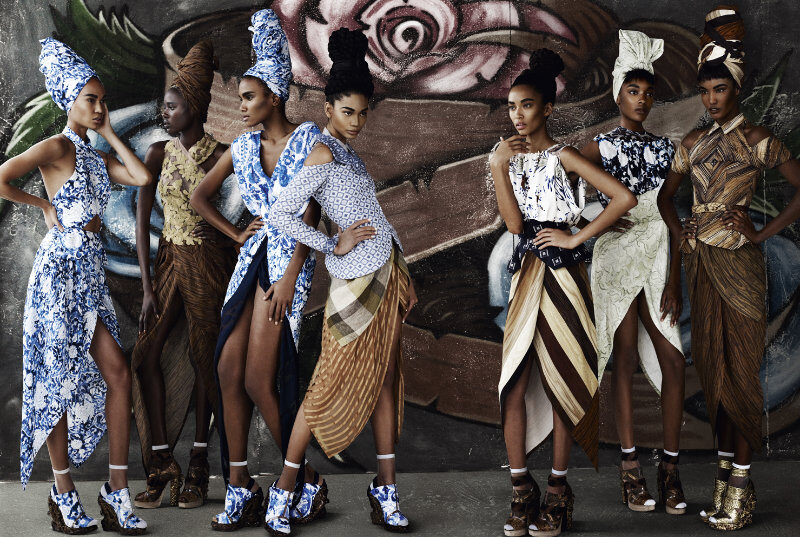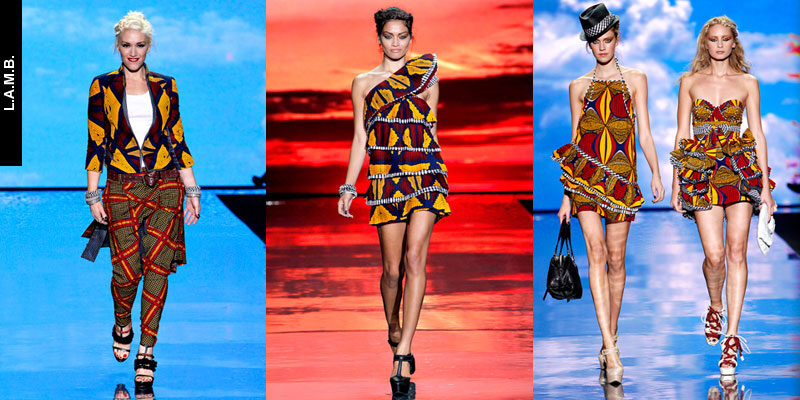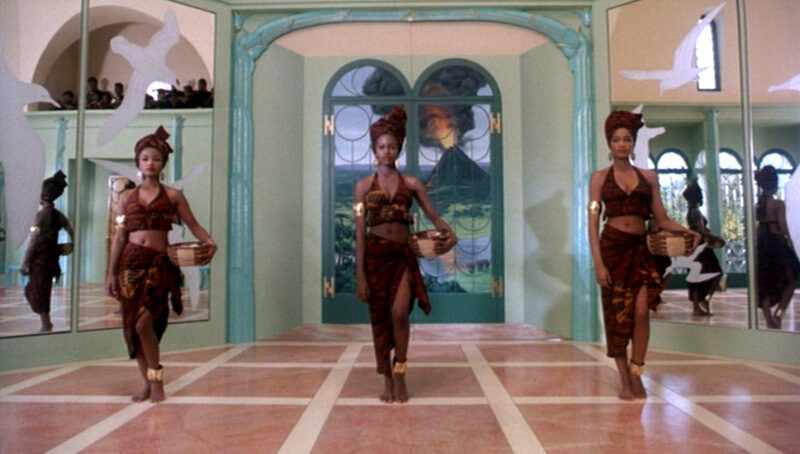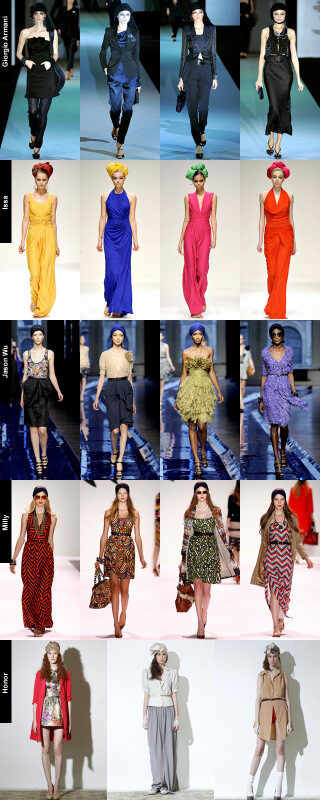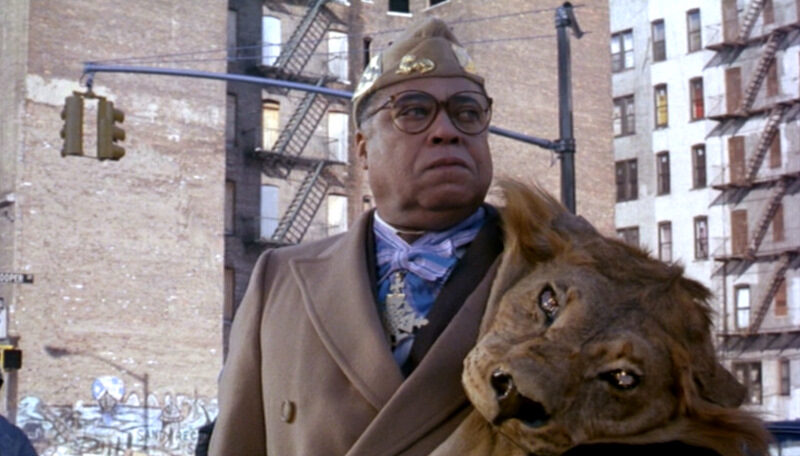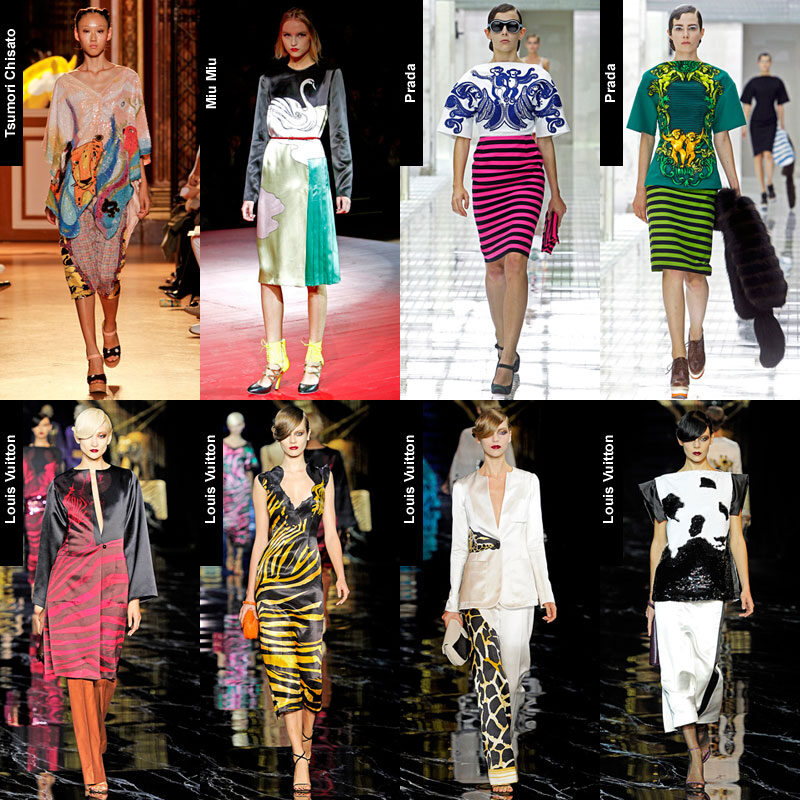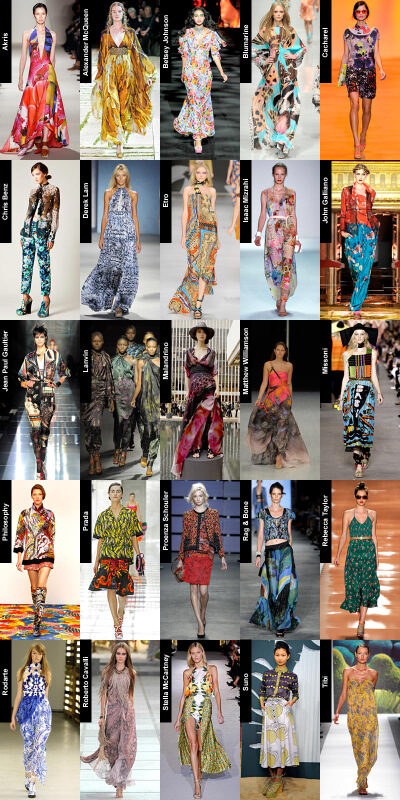Coming to America: Prints & Turbans in Contemporary Fashion | Clothes on Film
© 2011 Chris Laverty. All rights reserved. 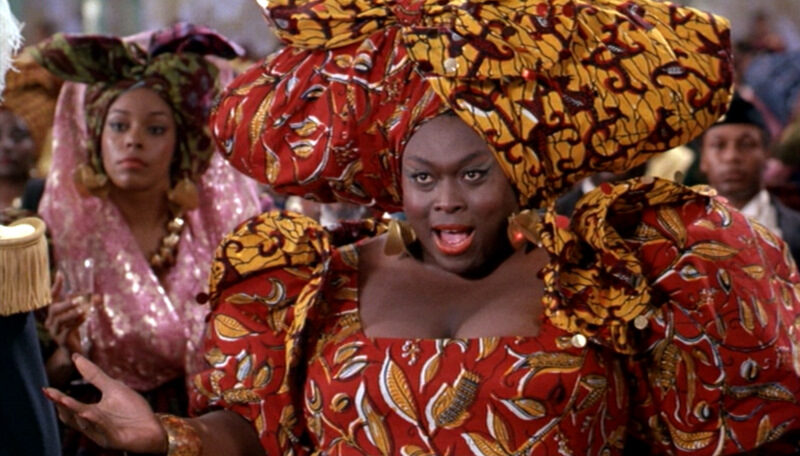
Spring. It’s long overdue and so is spring fashion. While winter clothes inspired by trends of 2010 fall collections are still prevalent, stores are piling up with spring lines that were on runways during September. Two attention grabbing trends in women’s fashion this upcoming season are prints and turbans, empathised in hit 1988 comedy Coming to America (directed by John Landis).
U.S. Vogue currently features seven designers with their 2011 Spring/Summer Ready-to-Wear collections, referring to them as the “American All-Stars” of New York fashion in a spread entitled ‘Gangs of New York’. Rodarte, by Kate and Laura Mulleavey, who have made Vogue’s top ten season after season, are among the seven lines included. Photographed by Mario Testino and styled by fashion editor and creative director Grace Coddington, this spread (below) captured what was “distinctly American” about these collections.
Another American designer who featured prints – African prints to be exact – in her 2011 S/S collection was Gwen Stefani for L.A.M.B.
When considering American, turbans (used here in the generic sense to describe all forms of wrapped cloth headgear), prints, the Vogue spread and L.A.M.B. within the context of film, it is impossible not to think of Coming to America. Deborah Nadoolman-Landis was nominated for an Academy Award for her Achievement in Costume Design. Director John Landis remarked on this aspect for a DVD interview:
The costumes are wonderful in the movie, and really vital to the success of the film… the idea of creating a fairy-tale African Kingdom was interesting to me… the first person I talked to was my wife, Deborah, and I said ‘Look, you have to create an African Cinderella’… she was just the person to go to because this is someone who really knows her ethnic costume… she really more than anyone created (Zamunda).
Nadoolman-Landis then further discusses how inspiration came from the British Royal family, the British Empire, young maharajas, the Indian style of Brighton Pavillion in South England, and in Nadoolman-Landis’ words, “the greatest hits” of Africa, when describing fictional Zamunda as “an amalgam of North, South, East and West.” The patterns of the African costumes were taken directly from the dresses worn in West Africa’s Gambia. She also cites Senegal as an inspiration. Most male aristocrats of Zamunda donned a folded cap, similar to that of Kenya’s first president, Jomo Kenyatta, while women wore exaggerated turbans inspired by Cecil Beaton’s ‘Ascot’ hats of the British aristocracy in My Fair Lady (1964).
In March 2010, Jean Paul Gaultier featured African-print turbans in his F/W RTW collection, while Miuccha Prada’s every look was turbanned back in her 2007 S/S RTW line.
Some memorable turbans have been worn by personalities such as André Leon of Vogue, Salma Hayek during Paris Fashion Week in October ‘10 and Carrie Bradshaw (Sarah Jessica Parker) in Sex and the City 2 (2010). Maybe this trend is finally ready to find its way into mainstream fashion as it did in the 1970s with Barbra Streisand’s help, i.e. On a Clear Day You Can See Forever (1970), costumes by Cecil Beaton.
Here are the present Spring/Summer 2011 collections featuring turbans:
Perhaps those that stand out most are the Saharan-inspired turbans in all Giorgio Armani’s sixty looks. Michelle Smith was definitely channelling a 70’s air for Milly, while Jason Wu evoked more of an old Hollywood vibe, such as The Mystic (1925), The Painted Veil (1934) and The Postman Always Rings Twice (1947).
Coming to America was influential in fashion when released; African-inspired prints were suddenly everywhere. Nadoolman-Landis noted that seeing a lot of authentic African ensembles on the street was a sign of people celebrating and embracing the African culture beyond the fantasy of the film. She made many bold costume choices that certainly had an impact on the film’s success, one of which was the use of ocelot (the “Dwarf Leopard”) on Prince Akeem (Eddie Murphy) and lion for the King Joffer (James Earl Jones). One of the hottest trends from Fall/Winter 2010, the leopard print, returns this spring.
The following lion-enthused looks (mane and all) are also from the S/S RTW Collection, this time by Sarah Burton for Alexander McQueen:
The animals of the sets and costumes for Coming to America were inspired by Haile Selassie, the last emperor of Ethiopia, who kept animals everywhere. Nadoolman-Landis wanted to portray a sense of royalty, importance and power in the costumes of King Joffer and Prince Akeem. The bold use of these animals is comparable to the unconventional use of similar prints in this season’s collections. These looks do not just feature prints of animals, but the animals themselves. NB: Marc Jacobs’ giraffe running up the leg of one of his suits for Louis Vuitton or Miuccha Prada’s monkeys.
This dress (second below) is another look by Sarah Burton from this S/S season that closely resembles Coming to America due to the pheasant feathers. Choreographed by Paula Abdul, the first wedding dance sequence was one of the film’s highlights. These costumes presented a challenge all too familiar to costume designers: not only do ensembles have to be authentic and look good on camera, but dancers have to be able to move in them as well. With all the jumping and flipping undertaken by these particular dancers, Nadoolman-Landis was evidently successful in overcoming this challenge.
The final wedding scene presented another challenge. As this was essentially a fantasy film, Nadoolman-Landis felt that she had to top every royal wedding dresses ever portrayed on film, though was concerned that actress Shari Headley would look like a giant marshmallow with a 20ft train if she had chosen a white gown. Her solution: Barbie pink. She then opted for a pastel colour palette as complement to this very “Cinderella” moment. The following looks from Blumarine’s collection feature simiilar colours, again with leopard print making an appearance:
So, for those of you not embracing the turban or animal trend, ANY pattern will do, especially in the form of long ankle-grazing dresses; a must for the upcoming season, while mixing prints is a definite plus.
By Louise Junker
Louise is creator and editor of Dressed Cinema.
All runway photos courtesy of Style.com, with exception of label Honor taken from WWD. Vogue US February 2011 photographed by Mario Testino, sourced from Fashion Gone Rogue.
© 2011, Chris Laverty.
Related Posts:
